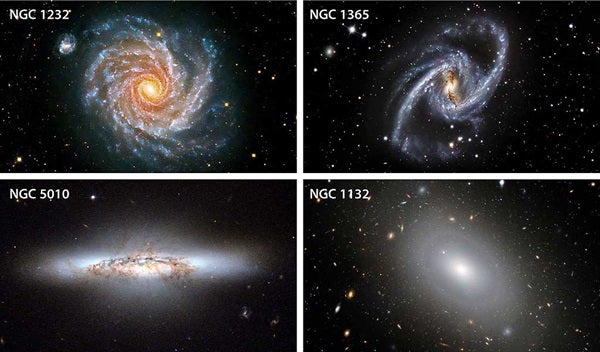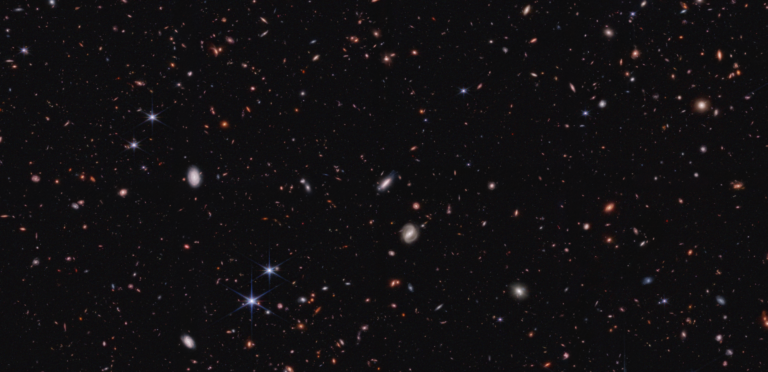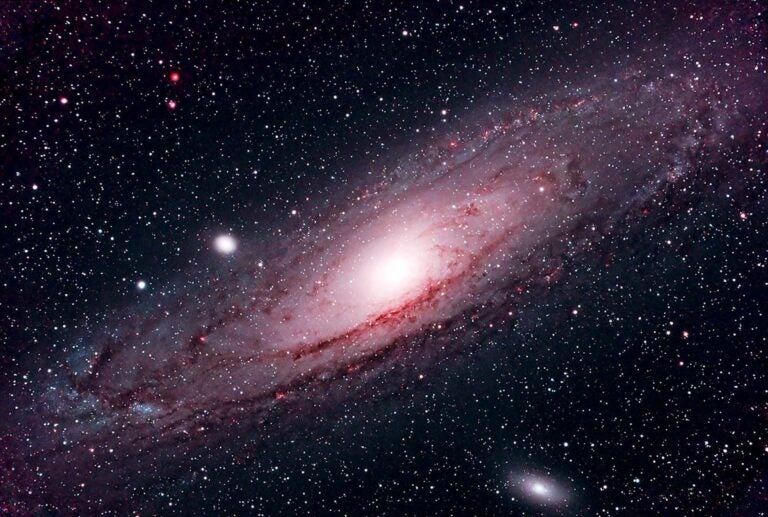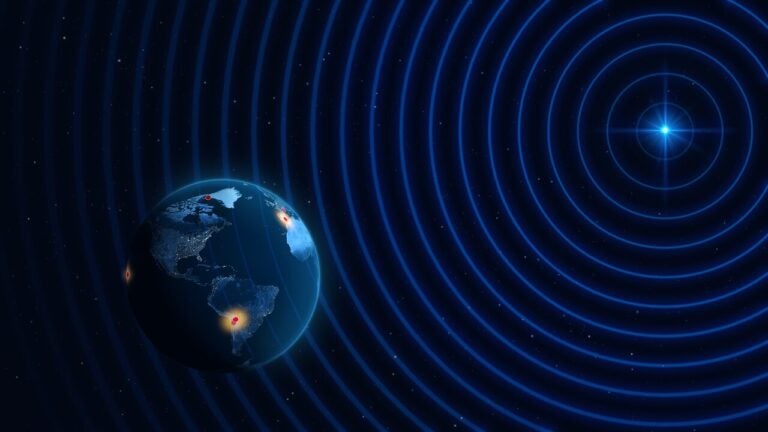A number of factors, however, complicate this situation. One is circular motions that result from spin or, more technically, angular momentum. For example, the Sun’s planets lie approximately in a plane, and our star’s gravity in combination with the amount of orbital spin determine their movements. Now consider a situation where we fill up space with spinning matter in orbits, and we can form a disklike structure — this is the basic form of a major component of spiral galaxies.
When we have many objects in a system, gravity attracts and encourages them to clump together. Two local examples are the Moon’s long-term companionship with Earth, and the Local Group of galaxies. In galaxy disks of hundreds of billions of stars, the effects of gravitational gregariousness are subtle. One phenomenon is that gravity produces wakes of stars that shear outward in the disk to help form spiral arms. Bars are similar, but more complicated, structures that result from systems of stars that rotate slowly in bulk over time while individual stars move rapidly on elongated orbits within the bar.
If rotation is less pronounced, it produces flattened balls (called “oblate spheroids”) that we see in some elliptical galaxies and the central bulges of spirals.
A third class of impressive features can occur when galaxies, and especially those with disks, collide. In such cases, gravity can pull material out from galaxies to make “tidal debris”: extended spiral arms, bridges, loops, and even shells of stars.
University of Wisconsin-Madison










